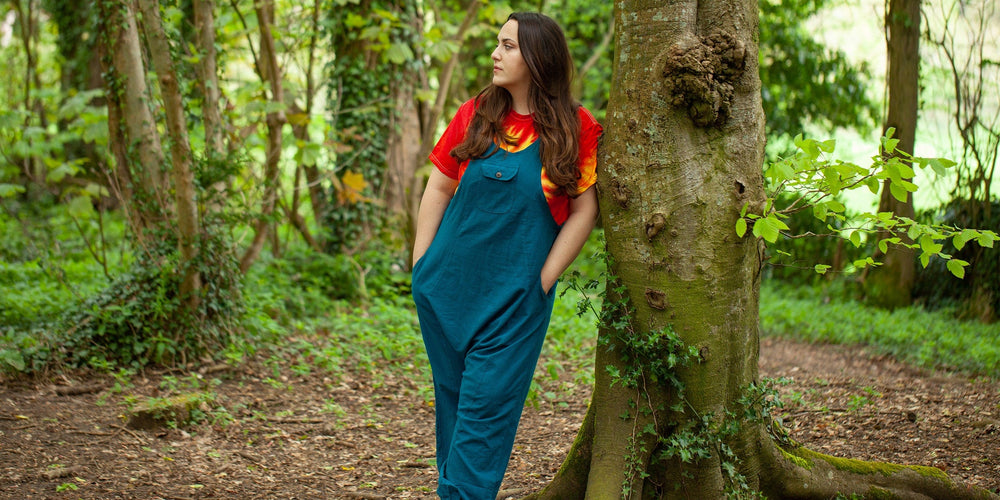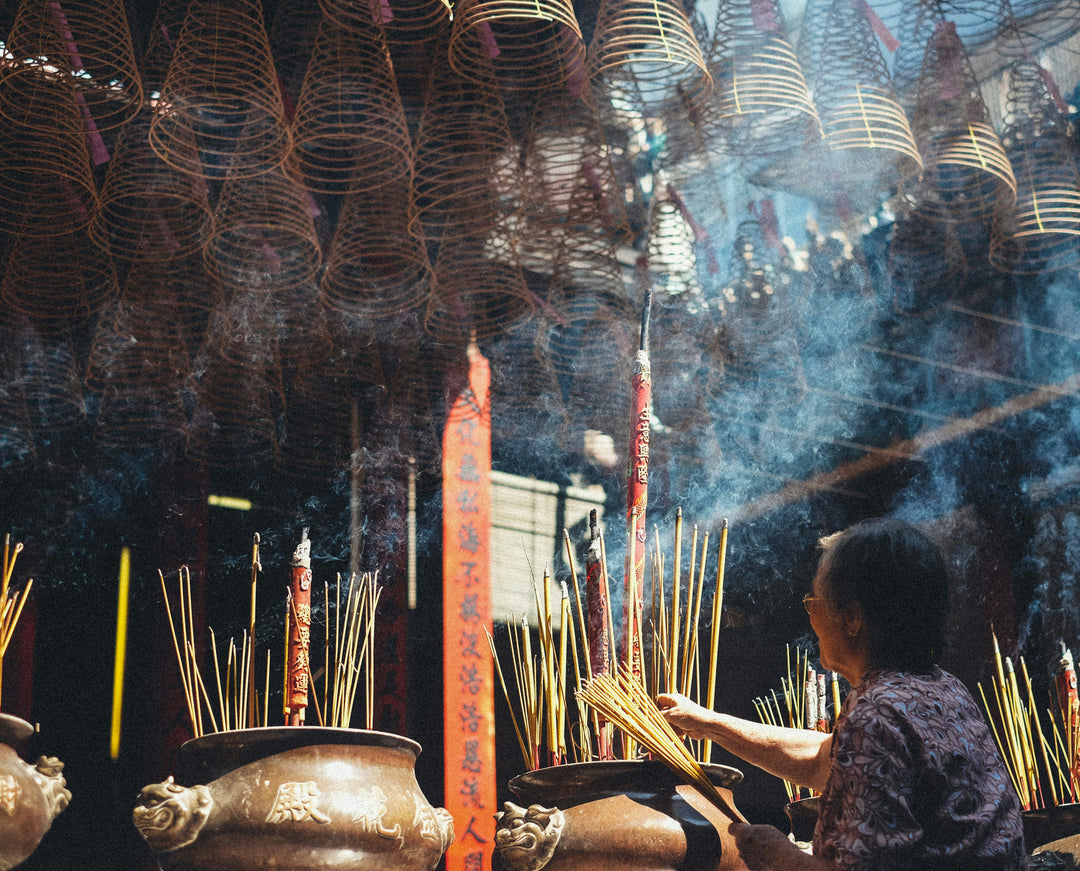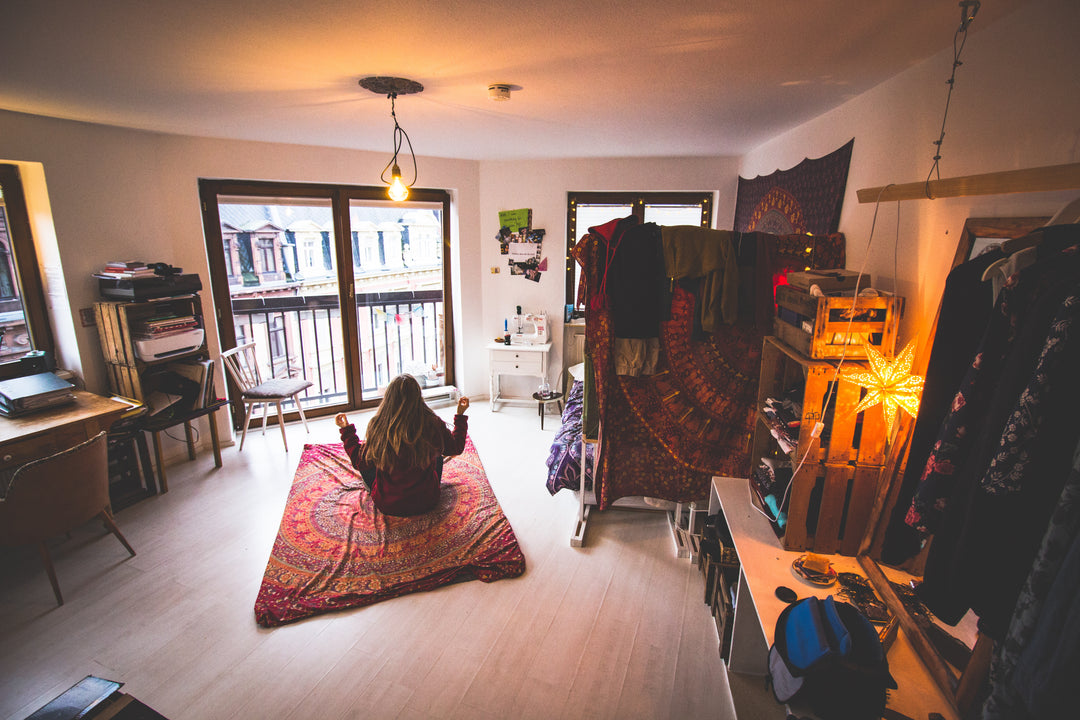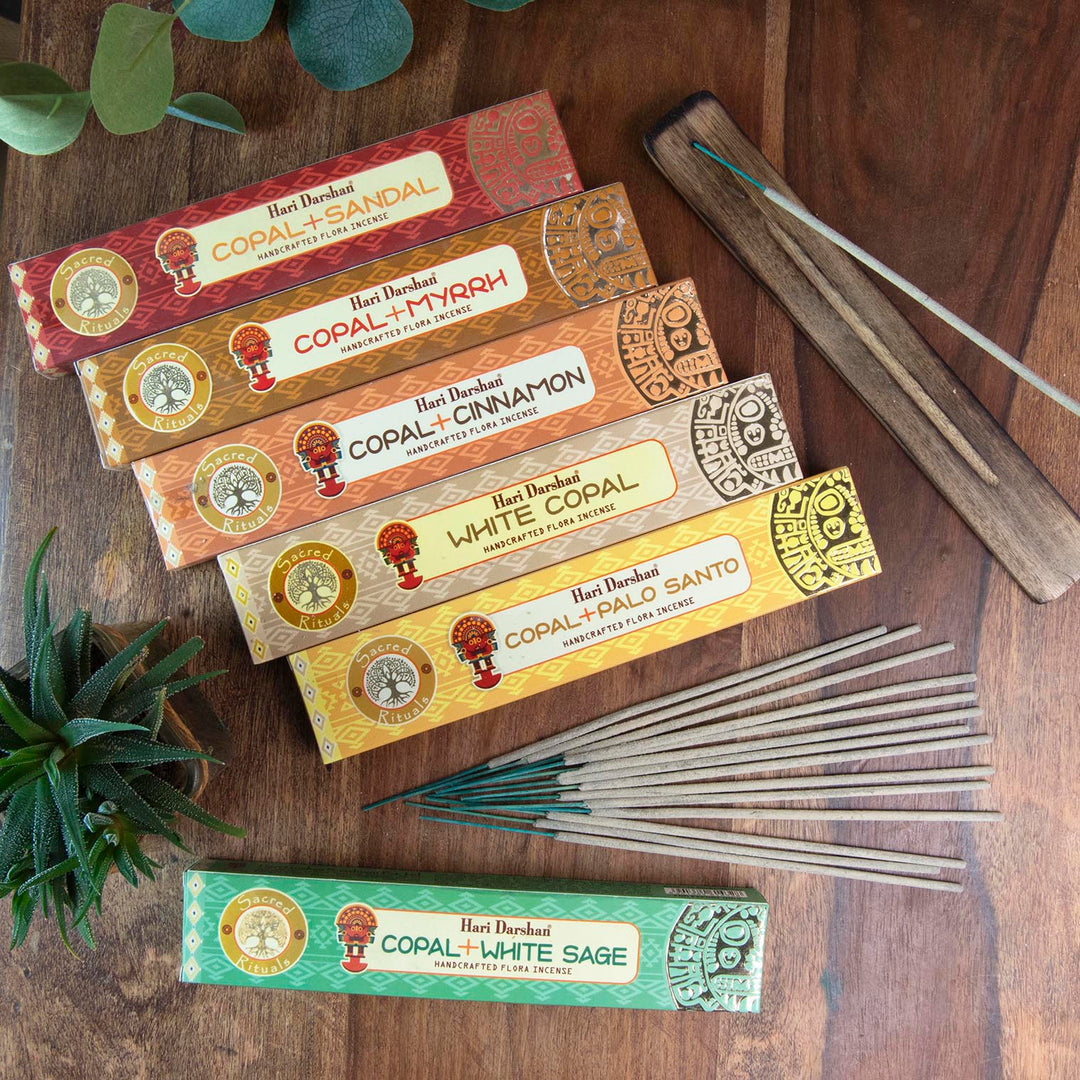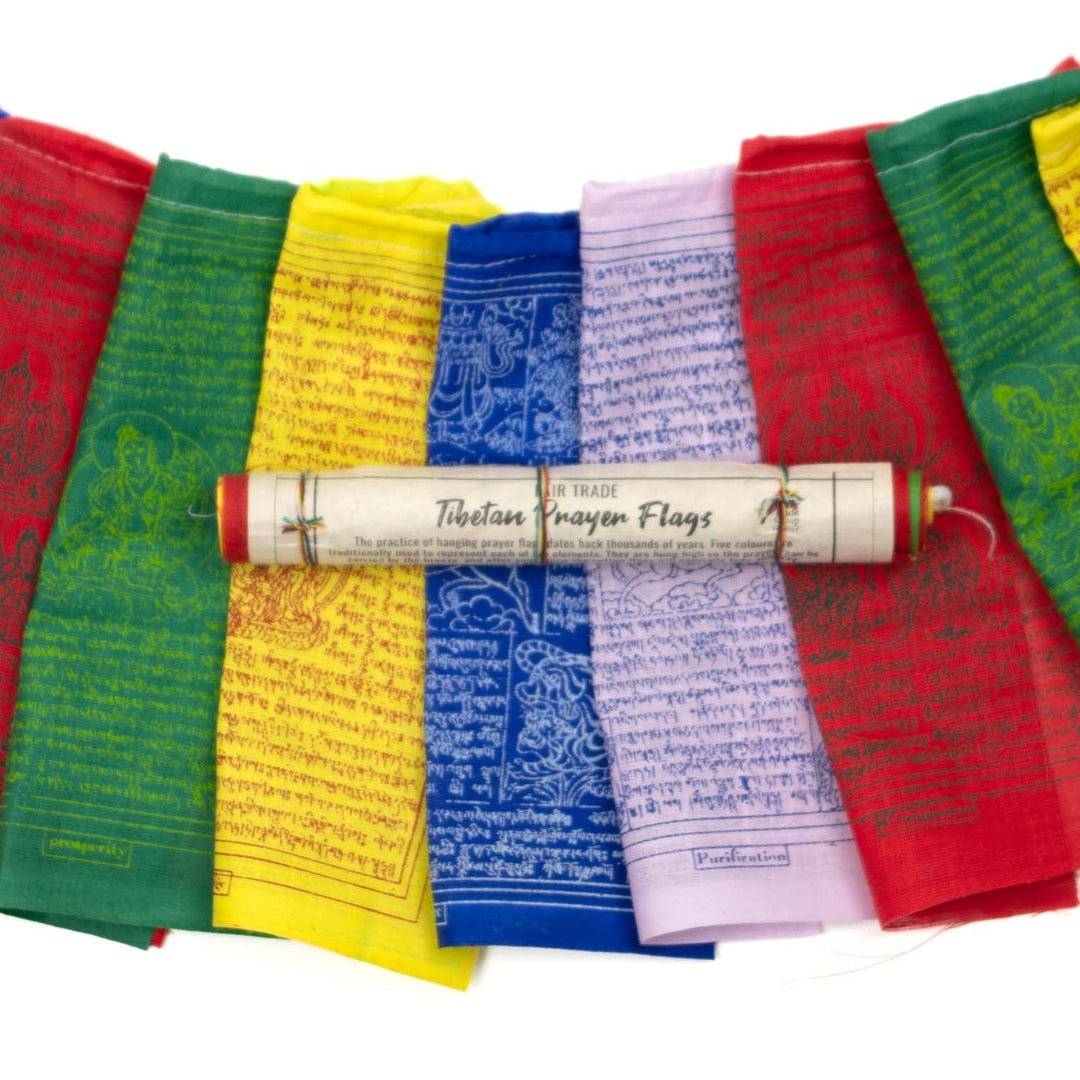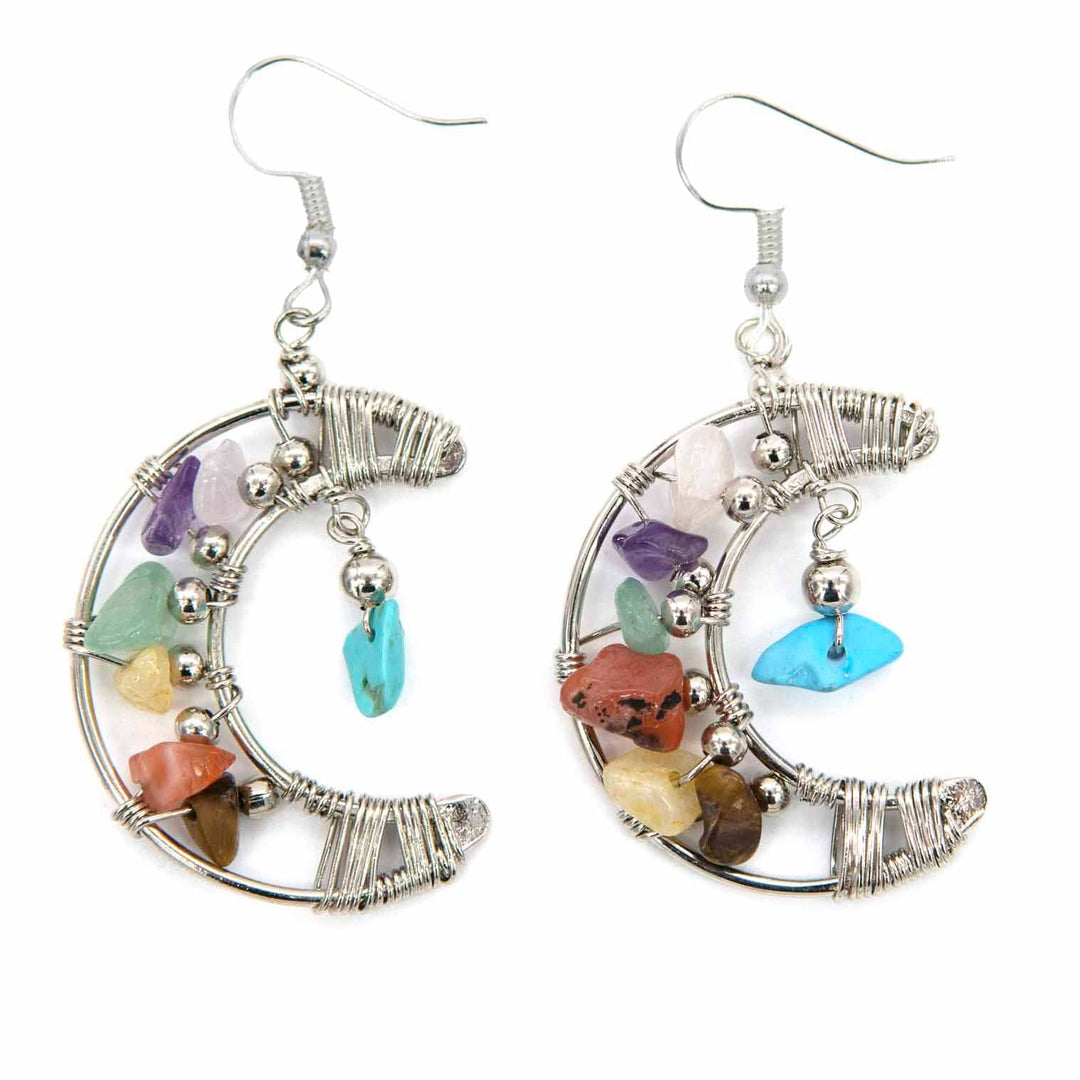How to Tie Dye a T-Shirt: Tips & Techniques

We love tie dye here at The Hippy Clothing Co., and there’s nothing I love more than making our own tie dye t-shirts! This is probably because I get to do it in my garden when I should be at work...but don’t tell the other guys that! The best bit about “working” in my garden it is great fun and it’s only a matter of time before my 9 year old daughter asks if she can help. Kids can never resist the colour and mess; I love the results as they are neither quite what you initially expect, but always look really cool. But you ask, how do I tie die my own clothing? Look no further for I have just the guide you need to do this at home.
Here’s a quick step guide for skimmers:
- Choose an item of clothing. The higher the cotton content the better, as manmade fibre won’t absorb the dye.
- Get it wet. You may have to soak it in a chemical depending on the dye you use (I’ll talk about this in depth below)
- Get twisting, binding, rolling, or whatever you like, depending on the effect you’d like to achieve. Remember where the fabric folds, as it is here that the dye won’t soak through so much thereby creating your beautiful pattern.
- Get busy dyeing! Mix up the dye according to the instructions and apply. If using more than one colour don’t forget to overlap and do both sides. The dye will mix a little, resulting in the creation of other colours.
- Bag it up and let it fester. I found leaving up to 24hours more for some dyes is best and not somewhere too cold, as most dyes like a bit of warmth.
- Unpack. Remove the bands and rinse in cold water. After this I give them a quick wash on a short cycle in the washing machine.
- Get them on the line to dry. You can tumble dry, which didn’t seem to hurt mine on the odd occasion but this is of course not the most environmentally friendly approach.
- Get wearing! Enjoy the admiring looks and feel smug in the knowledge that you have created something rather beautiful. Ok, now the skimmers have had their fill let’s get down to some details...
From where did tie dye originate & what is the history of tie dye?
Many cultures across the ages have used tie dye in various forms and its origins can date back as far as 500 AD, long before the LSD induced sixties & seventies and their reaction to post war grey and drab.
Tie dye was commonly used in Asia as far back as 1300 years ago, though the techniques were somewhat more time consuming and intricate, as the material was sewn by hand prior to the dyeing process; which they employed to delightful effect in many of their garments.
A fascinating excerpt from Wikipedia:Shibori includes a form of tie-dye that originated in Japan and Indonesia. It has been practiced there since at least the 8th century. Shibori includes a number of labor-intensive resist techniques including stitching elaborate patterns and tightly gathering the stitching before dyeing, forming intricate designs for kimonos. Another shibori method is to wrap the fabric around a core of rope, wood or other material, and bind it tightly with string or thread. The areas of the fabric that are against the core or under the binding would remain undyed.
Getting back to the 21st century, we use what are known as “fibre reactive” dyes, which bond with the cellulose in the fibres that the fabric is composed of. This is why you cannot easily dye manmade fibres (acrylics for example) as the dye will not effectively enter the fibres of the fabric, and therefore fails to bond. 100% cotton or hemp are ideal fabric choices, though you ideally want to use a plain white fabric, which is why I tend to veer more towards cotton as it is more commonly produced in plain white, resulting in a perfect canvas for the tie dye process.
The two types of dye I have used are the Dylon dyes, which are easily available in hardware stores and fabric shops. The other (and better) option is Procion MX dye. You’ll need to order this online from somewhere like Hand Printed. They’re really nice, helpful guys...Procion MX is much brighter than Dylon and really kicks bottom!
I find that this step-by-step guide gives me good results for both dyes; though it’s worth noting that this guide differs somewhat from the standard instructions that come with most dyes. I’ve honed this process after much messing around and experimenting and this has become the technique that works best for me. However, if it all goes horribly wrong please don’t blame me...you have been warned...
The preparation.
Oh yes, it’s all in the prep! You will need:
- Buckets: one or two.
- Newspaper to mix dyes on, as otherwise it can stain everything!
- A table covered with something waterproof. And some more newspaper.
- Outside. If you have no outside then inside is okay but you have to be more careful.
- Rubber gloves. Yes wear gloves; the dye will stain your hands for ever...well for a jolly long time anyway. Some people like to wear a dust mask and goggles. I don’t...I am just very careful, but you do not want to breath the dye in or get it in your eyes.
- Old Clothes or an apron that you don’t mind getting dye on.
- Rubber bands.
- Sandwich bags or any other small unperforated bags
- A place to keep the item of clothing when it is festering - preferably somewhere it can hold any dye leaking from the bags.
Let’s get busy tie dyeing.
For both dyes the item of clothing will need to be wet when you apply the dye.
For Dylon I soak in a solution of salt water: about 50g of salt to 1L
For Procion MX I use about 1 tbsp of soda ash (Sodium Carbonate) per 1L
For both I use warm water.
Chuck in your items to be tie dyed and let them soak while you prep the dye.
To mix up the dye I use the following method:
For Dylon I mix one pack of 50g hand dye in to 500 ml of warm water. I use a water bottle out of the recycling and make a small hole in the top, then give it a good shake, checking the top is on and the hole is covered with a gloved finger.

For Procion MX I used 1tsp of dye and 1tsp of Urea in 200ml of warm water. Again this goes into a bottle and I give it a good shake. I recently bought some squeezy bottles off eBay and I have to say this does make life a little easier.
Here’s some info on the extra chemicals you get from Hand printed (originally found here):
Salt
Common Salt (Sodium Chloride) helps the dye to have a greater affinity with the fibre than the water, encouraging the dye to migrate into the fibre.
Soda Ash
(Sodium Carbonate) is used as an alkali fixing agent.
Urea
Urea is an agent that attracts and retains water. Urea improves dye solubility and helps improve colour yield and stability.
Time to get creative.
Take the garment out of the water and ring out any excess water, then lay flat on the table. My favourite is the classic pinch and twist (more on that in a jiffy), but you can do whatever you like!
Pinch the item and twist it and keep twisting until all of it now looks like a twisted flat pancake.

Then gather any loose ends up around the edges, and holding together wrap a rubber band around it, repeating several times until tight enough to hold it all in place.
Now how tight do you do the bands?
When I first started out I tied the bands very tight, and this is cool but where the folds are tightly compressed the dye will not get in there. This can look good if you want a lot of the original colour of the fabric to still be seen. But in later efforts I made them a bit looser to let the dye flow in, resulting in a more full coverage.
Once bound up you can get dyeing. For the classic rainbow look I dye half yellow half Maroon and half Turquoise; this means you will get over lap and colour mixing in the fabric. Far out man!

You will need to squirt a fair amount of die on the item so some die will drip out the other side. As you can see I use a large old pot plant tray to catch the drips, with some wire mesh from an old rabbit hutch. Once you are happy with your coverage it’s time to bag up. I use cheap thin sandwich bags, but as they end up being thrown away I try to keep these to a minimum. Tie a double knot in the top and put somewhere not too cold; your average indoor room temperature is good as the dye does not like a cold garage. I use a storage bin so if there are any leaks the bin will catch them.
Time to wait...
Leave your dyed garment(s) for at least 24 hours, if not more, as this will help the dye to fix and run together; thereby creating a greater variety of colours. Now comes the really fun bit: unpacking! Get a bucket of cold water and put the whole bag with the item of clothing in, break open the bag and start to undo the bands (these can be reused). Now start to open up the clothes and rinse in the water. You may need to change the water a few times but once the water is looking a bit clear then you can give them a squeeze and chuck into the washing machine, making sure there are no rubber bands left...my washing machines pump did not like these for some strange reason!
When I first started I used a spot of washing liquid (laundry detergent), just a spot. Now I use Colsperse; this helps to remove any loose dye and really brightens up the colour. You can get away with using just use a spot of washing liquid instead though. Run the machine on a short cycle to save water, and hey presto you are done!! I’d recommend drying on a washing line if you can, or otherwise you can use a tumble dryer on a low heat setting; though it’s probably best to avoid doing this with other light colour items.
Time to get wearing your new funky creation and don’t forget: if you like the sound of doing this yourself but can’t be arsed, The Hippy Clothing Co. sells them! Peace. x


